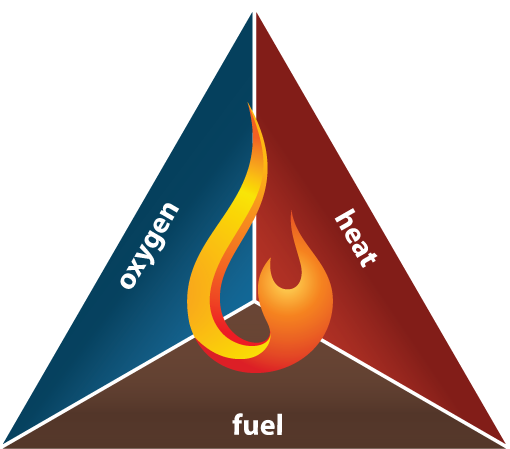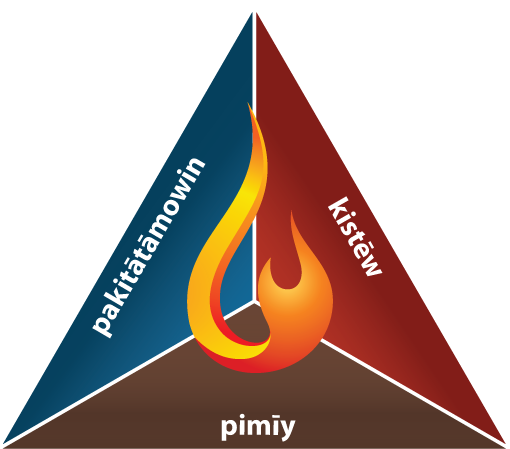Our Journey
While there is positive momentum occurring with respect to the journey of Indigenous-led uses of fire on the land across various regions of Canada (particularly, western Canada), putting transformative change into action remains a complicated task within and across different orders of government.
During our Muskrats to Moose Project, questions that arose were
- How do we effectively “indigenize” prescribed burns and habitat restoration?
- How do we renew our understanding of fire and return our Indigenous-led fire practices back to the land?
- How can we “braid” Indigenous knowledge and non-Indigenous knowledge from validated sources?
- How can we effectively implement notable sections/clauses of the United Nations Declaration on the Rights of Indigenous Peoples (UNDRIP) and the Truth and Reconciliation Commission of Canada (TRC) Calls to Action into our fire practices and habitat restoration for Indigenous Peoples, provinces and wildlife?
As Muskrats to Moose is a multi-year project, we reflected on these questions and were interested in documenting and sharing Indigenous-led and accessible fire stewardship resources. We draw on the knowledge and wisdom of Muskrats to Moose Project team members and contributors (interview participants, Youth artists, peer reviewers) who are of First Nations, Métis and non-Indigenous heritage to
- provide information and resources in applying Indigenous-led fire stewardship and settler and state-led fire management on the land;
- increase the role of First Nations and Métis Peoples and communities in the policy development, governance and stewardship of lands and resources in the Saskatchewan River Delta; and
- promote meaningful engagement of First Nations and Métis Peoples and communities in Indigenous-led fire practices and settler and state-led fire management.

2022: TEK fire practitioners starting a burn.
As human activities and climate change are transforming the biophysical elements of the Saskatchewan River Delta, our Muskrats to Moose Project team felt it was equally important to document the social and cultural changes that Saskatchewan River Delta land users are experiencing.
Actively listening to their stories and lived experiences and engaging in discussions, often in Cree (local Swampy Cree dialect), provided a safer place to share their knowledge about opportunities/strengths and barriers/challenges in applying Indigenous-led fire practices and settler and state-led fire management in the Saskatchewan River Delta.
The Muskrats to Moose Project applies Indigenous knowledge and non-Indigenous knowledge and works to implement notable sections of the United Nations Declaration on the Rights of Indigenous Peoples and the Truth and Reconciliation Commission of Canada Calls to Action.
As a collective framework for reconciliation, UNDRIP and the TRC Calls to Action can be used to support meaningful engagement of Indigenous Peoples and communities in the journey of Indigenous-led uses of fire on the land that can aid in addressing the effects of colonization, for example, loss of ceremonies, languages, families and relations, loss of identity, self, land and resources.
The benefits of the Muskrats to Moose Project are
- supporting Indigenous-led cultural practices related to fire;
- informing emergency management from Indigenous perspectives; and
- recognizing Indigenous ways of knowing and collaborations on wildfire management at provincial and national levels.
The Muskrats to Moose Project has three components:
- The literature review drew from existing Indigenous-led fire practices and includes publicly available documentation on non-Indigenous (settler and state-led fire management) prescribed burning.
- Interviews were co-led by Solomon and Renée Carrière (Muskrats to Moose Project team members). Informed by relevant Indigenous and non-Indigenous literature on Indigenous-led fire practices, settler and state-led fire management and habitat restoration, 16 interviews were completed from December 2021 to March 2022.
Participants were either First Nations or Métis Elders, Indigenous fire practitioners, community champions or non-Indigenous allies. They were subject matter experts on Indigenous-led fire practices or settler and state-led fire management and related habitat restoration. Included were participants having working knowledge and lived experiences in the Saskatchewan River Delta.
Approximately 90% of the interviews were conducted in Cree (local Swampy Cree dialect).
The lead interviewer (Solomon Carrière) is fluent in both Cree and English.
We heard stories about approaches to fire practices and the effects and implications to local and regional habitat restoration in the Saskatchewan River Delta.
- Informed by the literature review and interview process, we developed the We Are Fire Toolkit.
The We Are Fire Toolkit is a knowledge product that was co-developed as part of the broader Muskrats to Moose: Braiding Cultural Burning and Western Fire Management Project.
This free educational resource is available online for readers to renew the understanding of fire on the land—applying Indigenous-led fire practices and settler and state-led fire management in the Saskatchewan River Delta.
The We Are Fire Toolkit was peer reviewed by individuals with knowledge, skills and experience in applying Indigenous-led fire practices and settler and state-led fire management. They are representative of First Nations, Métis and non-Indigenous allies who ensured that this knowledge product is timely, relevant, accessible and culturally relevant for a variety of audiences such as Indigenous communities and organizing groups, land users, orders of government, wildfire science specialists and educators. This process also included inviting local community members to participate as peer reviewers.

According to the Canadian Wildland Fire Glossary, the fire triangle is “an instructional aid in which the sides of an equilateral triangle represent the three factors necessary for combustion and flame production (such as oxygen, heat, fuel). When any one of these factors is removed, flame production is not possible or ceases.”[1]

Rather than viewing fire as an element to suppress, eliminate or fear, the Muskrats to Moose Project views the “oxygen” (pakitātāmowin) as our literature review on Indigenous-led fire stewardship and Indigenous-led uses of fire on the land, while the “heat” (kistēw) is the interview process. The “fuel” (pimīy) is our knowledge product, the We Are Fire Toolkit. Listen to Cree
In addition to the We Are Fire Toolkit, in 2023 and beyond, the Muskrats to Moose Project team will be involved in future knowledge sharing activities for example, presentations, podcasts and popular writing about applying Indigenous-led fire practices and settler and state-led fire management in the Saskatchewan River Delta.
Copyright © 2025 Muskrats to Moose Project Team
